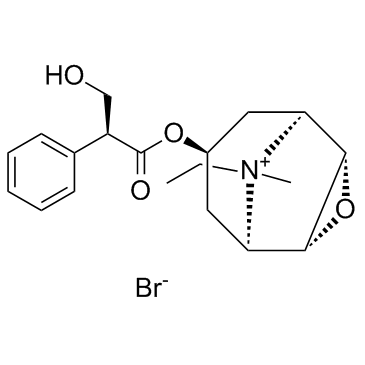Effects of tiotropium on sympathetic activation during exercise in stable chronic obstructive pulmonary disease patients.
Kenji Yoshimura, Ryoji Maekura, Toru Hiraga, Seigo Kitada, Keisuke Miki, Mari Miki, Yoshitaka Tateishi
Index: Int. J. Chron. Obstruct. Pulmon. Dis. 7 , 109-17, (2012)
Full Text: HTML
Abstract
Tiotropium partially relieves exertional dyspnea and reduces the risk of congestive heart failure in chronic obstructive pulmonary disease (COPD) patients. However, its effect on the sympathetic activation response to exercise is unknown.This study aimed to determine whether tiotropium use results in a sustained reduction in sympathetic activation during exercise.We conducted a 12-week, open-label (treatments: tiotropium 18 μg or oxitropium 0.2 mg × 3 mg), crossover study in 17 COPD patients. Treatment order was randomized across subjects. The subjects underwent a pulmonary function test and two modes of cardiopulmonary exercise (constant work rate and incremental exercise) testing using a cycle ergometer, with measurement of arterial catecholamines after each treatment period.Forced expiratory volume in 1 second and forced vital capacity were significantly larger in the tiotropium treatment group. In constant exercise testing, exercise endurance time was longer, with improvement in dyspnea during exercise and reduction in dynamic hyperinflation in the tiotropium treatment group. Similarly, in incremental exercise testing, exercise time, carbon dioxide production, and minute ventilation at peak exercise were significantly higher in the tiotropium treatment group. Plasma norepinephrine concentrations and dyspnea intensity were also lower during submaximal isotime exercise and throughout the incremental workload exercise in the tiotropium treatment group.Tiotropium suppressed the increase of sympathetic activation during exercise at the end of the 6-week treatment, as compared with the effect of oxipropium. This effect might be attributed to improvement in lung function and exercise capacity and reduction in exertional dyspnea, which were associated with decreases in respiratory frequency and heart rate and reduced progression of arterial acidosis.
Related Compounds
| Structure | Name/CAS No. | Molecular Formula | Articles |
|---|---|---|---|
 |
Oxitropium Bromide
CAS:30286-75-0 |
C19H26BrNO4 |
|
The development of anticholinergics in the management of COP...
2007-01-01 [Int. J. Chron. Obstruct. Pulmon. Dis. 2(1) , 33-40, (2007)] |
|
Anticholinergic therapy for acute asthma in children.
2012-01-01 [Cochrane Database Syst. Rev. 4 , CD003797, (2012)] |
|
Effect of resection of the posterior nasal nerve on function...
2008-01-01 [Acta Otolaryngol. 128(12) , 1337-41, (2008)] |
|
Effects of replacing oxitropium with tiotropium on pulmonary...
2007-03-01 [Respir. Med. 101(3) , 476-80, (2007)] |
|
High-resolution computed tomography evaluation of airway dis...
2008-02-01 [Radiol. Med. 113(1) , 43-55, (2008)] |